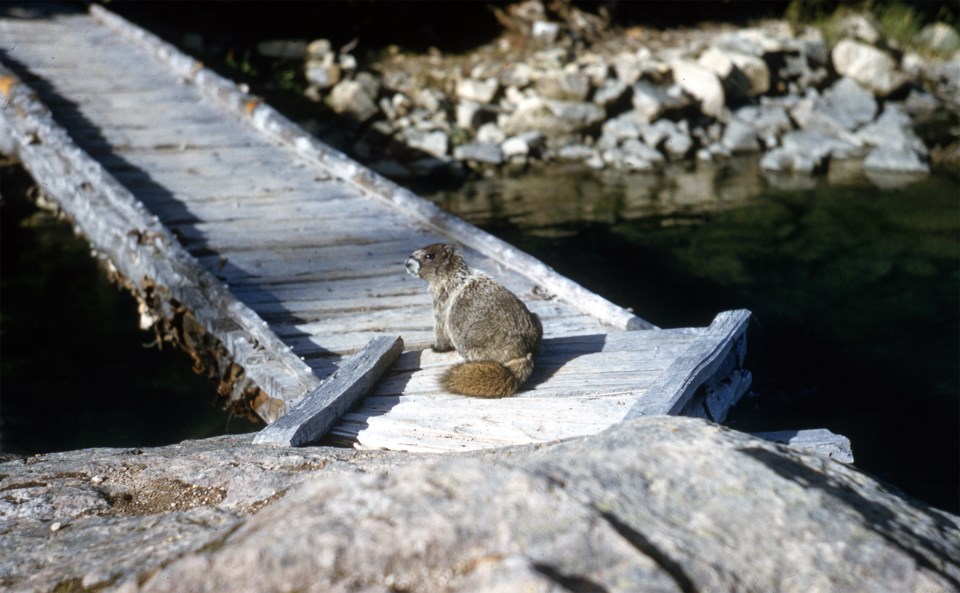Before it became Whistler, the local mountain was known by a few other names.
Whistler Mountain was first known as Cwítima/Kacwítima by the Lil’wat Nation and Sk_wik_w by the Squamish Nation. In the 1860s, the mountain was named London Mountain by British naval surveyors because the thick fog coating the area was reminiscent of the foggy skies of London. The name didn’t stick because of the connotations from the dangerous smog London suffered as a result of coal-burning. The name Whistler, or Whistle, was used to refer to the mountain unofficially as early as the 1920s, inspired by the hoary marmots that populate the mountain and the whistling sound they make when trying to alert friends danger is near. The name was officially changed in the 1960s.
British Columbia is home to four species of marmots: the yellow-bellied marmot, the Vancouver Island marmot, the woodchuck, and, of course, the hoary marmot. Only the hoary marmot lives in Whistler. While the local marmots appear to love to hang out on the mountain, sunbathing and entertaining tourists, they actually spend six to eight months underground hibernating every year. Marmots dig hibernation burrows up to 23 feet deep to spend their winters in. In the months they are not hibernating (March to September), these critters’ diets consist of berries, roots, mosses, lichen, grasses, and other plants. These furry friends generally live in colonies of 10 to 20, and a group of marmots is often called a madness. Whistler’s favourite rodent also happens to be the largest breed of ground squirrel, weighing up to a whopping 20 pounds! Luckily, marmots are protected by the BC Wildlife Act, so we can count on keeping the mountain full of these adorable, friendly faces.
It is not a stretch to consider the hoary marmot the mascot of Whistler given they are the namesake of the mountain and the town. Back in the 1980s, the Whistler Resort Association (today known as Tourism Whistler) even made it official. A contest was held to name the new marmot mascot and the winner, eight-year-old Tammi Wick, chose the name Willie. Willie Whistler became an active community member, attending ski races, giving out awards, and entertaining locals and visitors alike. Willie Whistler the marmot served as a mascot at local events into the 1990s.
The 2010 Olympic and Paralympic Winter Games introduced a second marmot mascot to Whistler, this one named MukMuk. An official sidekick to the Olympic and Paralympic mascots Miga, Sumi, and Quatchi, MukMuk also represented the Tsleil-Waututh First nation, one of the Four Host First Nations of the 2010 Games. While MukMuk was a great representative for Whistler’s marmot community, he was actually modelled after the Vancouver Island marmot rather than the hoary marmots found in Whistler.
Though Whistler currently has no official mascot, the hoary marmot still holds a special place in the heart of locals and visitors. If you are lucky, you may spot the community’s muse while hiking around Wedgemount Lake or riding up the gondola. Marmots have played an important part of Whistler’s past and will continue to be a part of our future.
Ella Healey is the Summer Program Coordinator at the Whistler Museum through the Young Canada Works Program.




